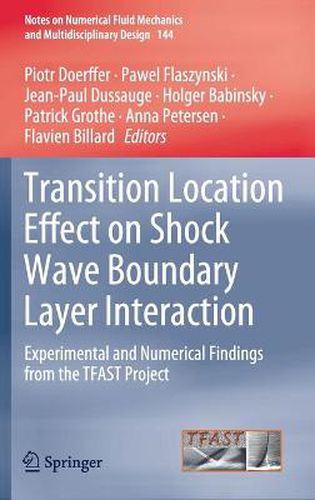Readings Newsletter
Become a Readings Member to make your shopping experience even easier.
Sign in or sign up for free!
You’re not far away from qualifying for FREE standard shipping within Australia
You’ve qualified for FREE standard shipping within Australia
The cart is loading…






This title is printed to order. This book may have been self-published. If so, we cannot guarantee the quality of the content. In the main most books will have gone through the editing process however some may not. We therefore suggest that you be aware of this before ordering this book. If in doubt check either the author or publisher’s details as we are unable to accept any returns unless they are faulty. Please contact us if you have any questions.
This book presents experimental and numerical findings on reducing shock-induced separation by applying transition upstream the shock wave. The purpose is to find out how close to the shock wave the transition should be located in order to obtain favorable turbulent boundary layer interaction.
The book shares findings obtained using advanced flow measurement methods and concerning e.g. the transition location, boundary layer characteristics, and the detection of shock wave configurations. It includes a number of experimental case studies and CFD simulations that offer valuable insights into the flow structure. It covers RANS/URANS methods for the experimental test section design, as well as more advanced techniques, such as LES, hybrid methods and DNS for studying the transition and shock wave interaction in detail. The experimental and numerical investigations presented here were conducted by sixteen different partners in the context of the TFAST Project.
The general focus is on determining if and how it is possible to improve flow performance in comparison to laminar interaction. The book mainly addresses academics and professionals whose work involves the aerodynamics of internal and external flows, as well as experimentalists working with compressible flows. It will also be of benefit for CFD developers and users, and for students of aviation and propulsion systems alike.
$9.00 standard shipping within Australia
FREE standard shipping within Australia for orders over $100.00
Express & International shipping calculated at checkout
This title is printed to order. This book may have been self-published. If so, we cannot guarantee the quality of the content. In the main most books will have gone through the editing process however some may not. We therefore suggest that you be aware of this before ordering this book. If in doubt check either the author or publisher’s details as we are unable to accept any returns unless they are faulty. Please contact us if you have any questions.
This book presents experimental and numerical findings on reducing shock-induced separation by applying transition upstream the shock wave. The purpose is to find out how close to the shock wave the transition should be located in order to obtain favorable turbulent boundary layer interaction.
The book shares findings obtained using advanced flow measurement methods and concerning e.g. the transition location, boundary layer characteristics, and the detection of shock wave configurations. It includes a number of experimental case studies and CFD simulations that offer valuable insights into the flow structure. It covers RANS/URANS methods for the experimental test section design, as well as more advanced techniques, such as LES, hybrid methods and DNS for studying the transition and shock wave interaction in detail. The experimental and numerical investigations presented here were conducted by sixteen different partners in the context of the TFAST Project.
The general focus is on determining if and how it is possible to improve flow performance in comparison to laminar interaction. The book mainly addresses academics and professionals whose work involves the aerodynamics of internal and external flows, as well as experimentalists working with compressible flows. It will also be of benefit for CFD developers and users, and for students of aviation and propulsion systems alike.